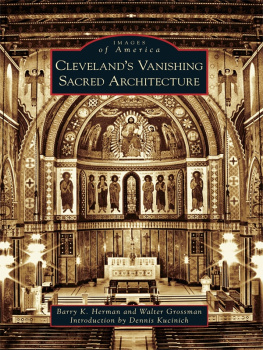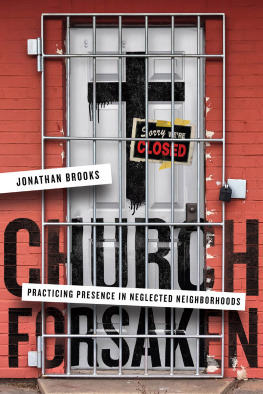One
ST. JAMES THE GREATER
Located at 17514 Detroit Avenue, St. James majestically looms over the Lakewood community. On July 1, 1908, five years after the City of Lakewood became a village on the west side of Cleveland, St. James was founded. Bishop Ignatius Horstmann, Clevelands third bishop, approved the naming of the Lakewood church after James the Greater, one of the 12 apostles. Not wanting another mono-ethnic church, he gave his blessing to the blending of the citys German-Catholic and Irish-Catholic founding families. The cornerstone was laid on October 12, 1912, and by the 1920s, with over 1,000 families and almost 5,000 members, the church had become a mainstream, English-speaking congregation.
Taking to heart the charge by the bishop at the founding of the new parish, Fr. Michael D. Leahy, the first pastor and creative influence behind the church, traveled to Europe in the company of architect Edward T. P. Graham in 1924. After making the grand tour, Leahy decided on the Sicilian Romanesque style of the 11th-century Cathedral Monreal in Palermo Sicily along with an exterior loosely based on the beautiful cathedral of Cafelu. The Great Depression virtually doubled the length of construction, and the bells were finally installed almost 20 years later. The church was dedicated on May 25, 1935, but the last brushstroke on the iconographic painting was not completed until 1944. The cost of the church was $569,000. Since its completion, there have been no significant changes to the church, inside or outside.
Both the interior and exterior show very apparent overtones of the Byzantine and Saracen/ Arab influence. (Sicily was under Islamic rule in 1174 when Monreal was built.)
The lofty facade of St. James is representative of the Sicilian Romanesque style, with the twin towers reflecting a definite Norman influence. However, a very pronounced Middle Eastern influence is seen both on the exterior and in the interior. Above the doors are stone statues of the Four Evangelists, with their names carved below each. The outside walls are made of Indiana limestone, and the steps are carved out of Minnesota granite. The outside columns are of rainbow granite with sandstone caps quarried from Berea, Ohio.
This May 25, 1935, photograph depicts an eventful day in the new city of Lakewood, the dedication of St. James Church. Overflowing crowds marked the day; here a vintage automobile drops off yet more people. (Cleveland State University, Cleveland Press photograph.)
The three arched porticos surround three sets of bronze double doors, which cost $6,450. The center doors bear the symbols of the Evangelists, SS. Matthew and Luke on the left and SS. Mark and John on the right. The two end doors have the St. James sword representing a cross.
Inside St. James is a variety of stone unmatched in Cleveland. The high altar is made of Verona marble. The six candles represent the six days of creation. Centered on the altar is the Agnus Dei (Lamb of God), flanked by symbols of the Four Evangelistsall in polished bronze. The wall behind the altar and the walls of the floor level are composed of panels made of dark red Numidian marble from Africa. Between these panels are strips of black and gold Levanto marble.
Above the marble surrounding the altar are iconic paintings of the 12 Apostles, all represented with their characteristic symbols. Even the ventilation grills beneath them are adorned with great detail.
In each of the three arched windows at that level, one of the mysteries of the rosary is depicted. In the left window are the Joyful Mysteries, the center depicts the Sorrowful Mysteries, and the Glorious Mysteries appear in the right (not shown in this image). The George W. Sotter Studios of Pennsylvania made all the stained glass in St. James.
Above the paintings of the apostles, on the apse (or canopy), are the iconic figures of Christ (Agnus Dei) enthroned in Heaven, flanked by the Blessed Mother and St. Joseph. Local artist David Scott Brown did the painting, and it is very indicative of the Byzantine influence prevalent in 12th-century Sicily.
A panoramic view of the front of the church shows the elaborately decorated arches and the continuous story of the faith in the frescoes above the arches. There are 18 columns at the sides of the nave. These 17-foot-high columns are of four different stones: Porta Santa marble, Verona red marble, red Levanto marble, and Belgian black marble. Close inspection reveals the inclusion of fossils in some of the columns.






















